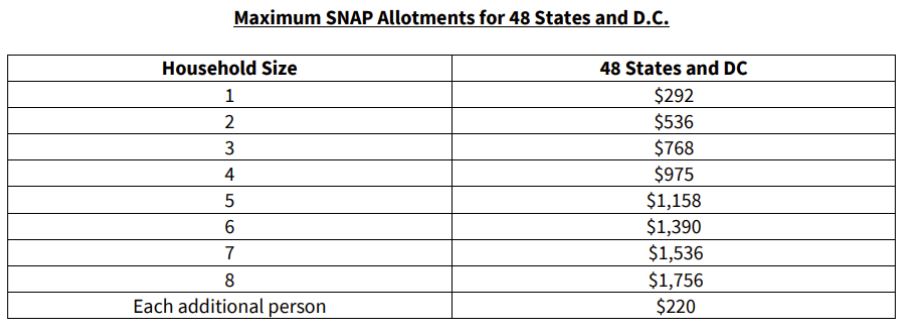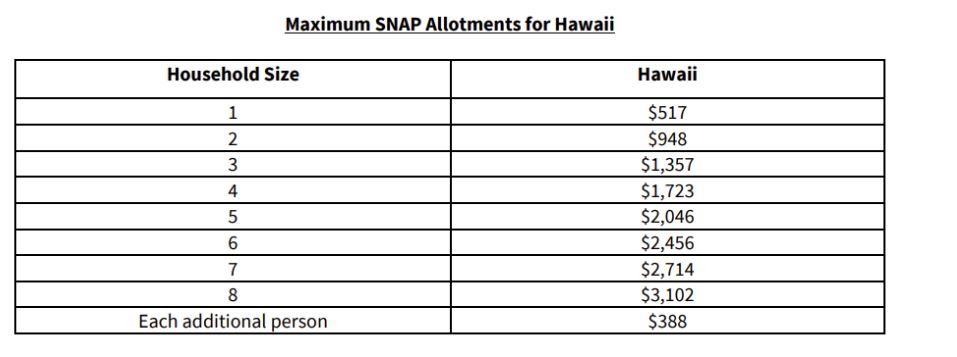Wildfires in California and Oregon. [1] A hurricane in Texas.[2] Flooding in Iowa.[3] These are just a few of the extreme weather events that D-SNAP — the Disaster Supplemental Nutrition Assistance Program — responded to in 2024.[4]
Soon, D-SNAP will help those impacted by Hurricane Helene — heralded as the worst hurricane of the modern era.[5] With each passing year, people in America have experienced some of the costliest and most destructive storms on record.[6] The climate crisis is increasing the frequency, intensity, and destruction of extreme weather events across the U.S. [7]
Hunger is compounded by disasters and emergencies that affect food distribution, including extreme weather events, and D-SNAP fills the gap by providing participants with emergency benefits for food.
D-SNAP participants ordinarily are not eligible for the Supplemental Nutrition Assistance Program (SNAP), the nation’s first line of defense against hunger used by over 40 million people every month. D-SNAP is available to eligible people who live, and in some cases work, in the area impacted by a disaster, who lose income, incur expenses, or face food spoilage. D-SNAP’s process is twofold:
- A Governor asks for individual assistance in their major disaster declaration request for their state. Once the U.S. President grants it, then D-SNAP is available.
- Households are then eligible for D-SNAP if their income and liquid assets minus disaster expenses are under the disaster gross income limit for their household size; if so, they are eligible to receive the maximum benefit for one month. [8]
In providing households in need with an Electronic Benefits Transfer (EBT) card, D-SNAP supports recoveries for both households and local economies. D-SNAP participants receive the maximum monthly benefit shown below for their household size.



For those who participate in SNAP, they do not receive a second EBT card with D-SNAP benefits on it. For SNAP participants, states can request waivers for the 10-day reporting requirement for their replacement benefits due to food spoilage. While states typically request to waive the time component, this still requires the household to apply for replacement benefits. Due to the catastrophes impacting people in already stressful and precarious times of their lives, we encourage states to remove this burden by requesting that the U.S. Department of Agriculture Food and Nutrition Service provide for automatic, mass replacement of benefits for those in the disaster-affected areas.
States can request to waive SNAP’s general restriction on hot prepared foods for D-SNAP, which is crucial in disasters that may affect access to electricity or running water and ensures dignity for those affected by crisis. Thoughtful planning and execution of D-SNAP can ensure that all impacted people are able to participate in the benefits of D-SNAP.9 This includes sensitivity to equity and accessibility to communities at risk, including Tribal nations, people with limited access to internet, and people with limited English proficiency.
The economic, health, and social impacts of these disasters on food security are often felt most acutely by historically disenfranchised communities, including Black people, Latinx people, and Indigenous people. [10] Majority Black, Latinx, and Indigenous communities have heightened vulnerability to wildfires. [11] The legacy of segregation and redlining also impacts the Black communities most at risk for damage by hurricanes. [12] The impacts of climate events can have long-lasting and inequitable health impacts adversely affecting communities of color. [13]
While D-SNAP is unable to address those systemic issues, it does respond to the most acute economic effects of natural disasters once grocery stores resume their operations.
This is important to note: D-SNAP is not a first responder. It can only operate when the normal streams of business have resumed. Before households can utilize D-SNAP or SNAP replacement benefits to replenish their food supply, the Federal Emergency Management Agency (FEMA) works with local nonprofits and government agencies to provide emergency food supplies. [14]
With disasters and emergencies expected only to increase in scale thanks to the climate crisis, D-SNAP — and SNAP in general — are more needed than ever before to support equitable recovery. FRAC’s latest guide to the federal nutrition programs during disasters is a must read for advocates in every state to prepare long before a disaster arrives.
[1] https://www.fns.usda.gov/disaster/california-disaster-nutrition-assistance
[2] https://www.fns.usda.gov/disaster/texas-disaster-nutrition-assistance
[3] https://www.fns.usda.gov/disaster/iowa-disaster-nutrition-assistance
[4] Disaster Assistance. Food and Nutrition Service, U.S. Department of Agriculture. https://www.fns.usda.gov/da/disaster-assistance
[6] 2022 U.S. billion-dollar weather and climate disasters in historical context, National Oceanic and Atmospheric Administration (January 10, 2023), https://www.climate.gov/news-features/blogs/beyond-data/2022-us-billion-dollar-weather-and-climate-disasters-historical
[7] How Can Climate Change Affect Natural Disasters? U.S. Geological Survey. https://www.usgs.gov/faqs/how-can-climate-change-affect-natural-disasters
[8] D-SNAP’s income limits for FY24 are available at https://fns-prod.azureedge.us/sites/default/files/resource-files/FY2024-DSNAP-IncomeEligibilityStandards.pdf
[9] Equity in FNS Disaster Nutrition Assistance Programs, Food and Nutrition Service, U.S. Department of Agriculture, March 2024, https://www.fns.usda.gov/da/equity
[10] Baxter L, Advancing Environmental Justice Through Improved Responses to Extreme Weather Events, National Institute of Food and Agriculture, U.S. Department of Agriculture, September 27, 2023, https://www.nifa.usda.gov/about-nifa/blogs/advancing-environmental-justice-through-improved-responses-extreme-weather-events
[11] Davies IP et al., The Unequal Vulnerability of Communities of Color to Wildfire, PLOS, November 2, 2018, https://journals.plos.org/plosone/article?id=10.1371/journal.pone.0205825
[12] Bruick Z et al., Climate Change and Race: The Impact on Black Lives, McKinsey Institute for Black Economic Mobility, November 30, 2023, https://www.mckinsey.com/bem/our-insights/impacts-of-climate-change-on-black-populations-in-the-united-states
[13] Berberian AG et al., Racial Disparities in Climate Change-Related Health Effects in the United States, Current Environmental Health Reports 9:3 (2022) https://www.ncbi.nlm.nih.gov/pmc/articles/PMC9363288/

